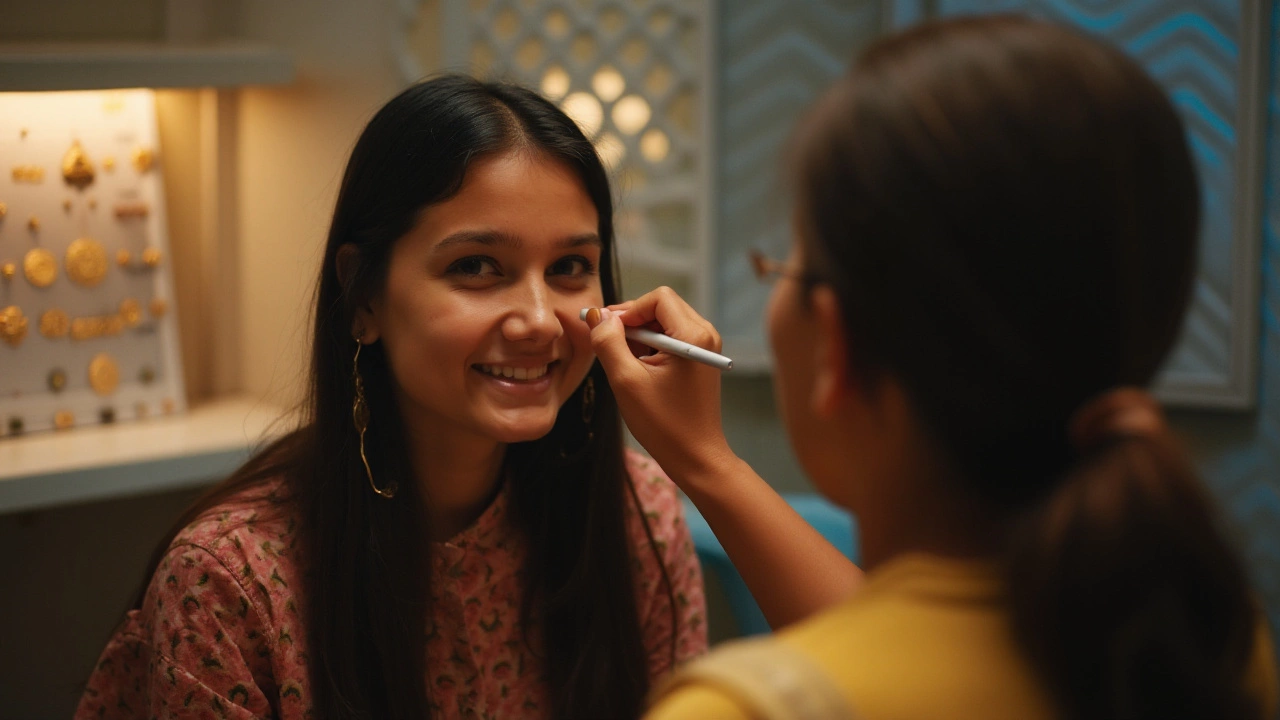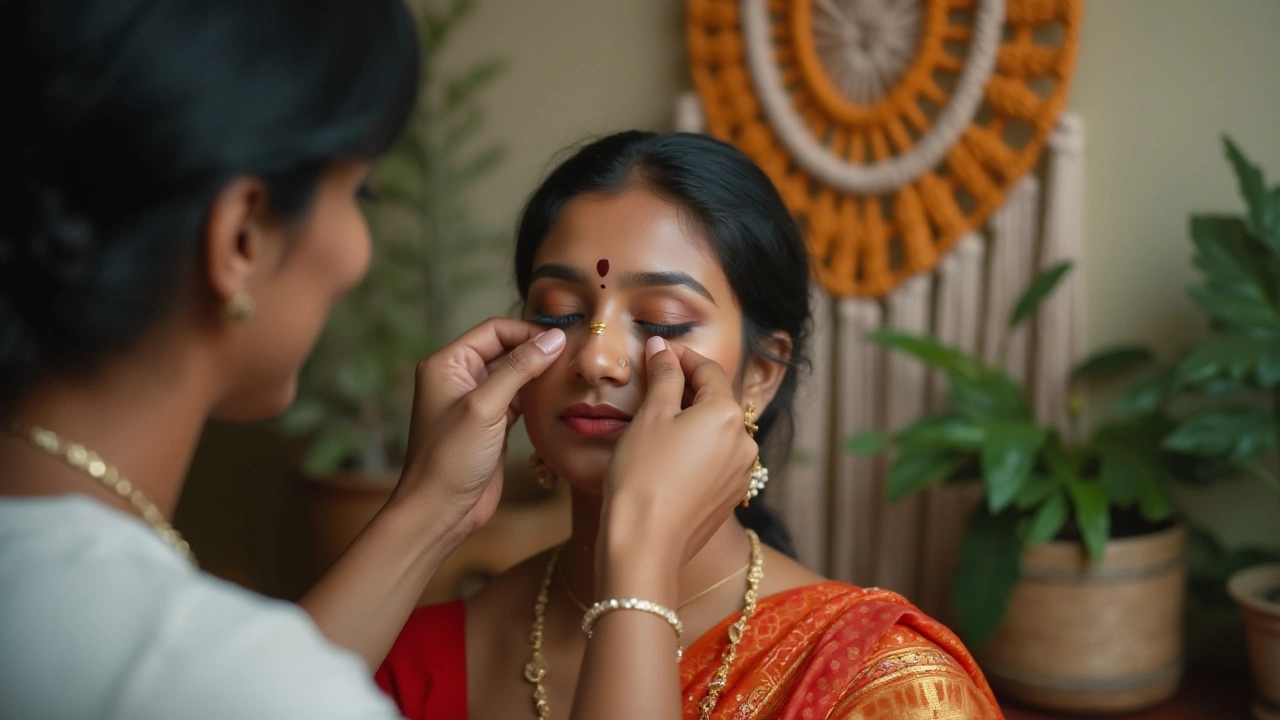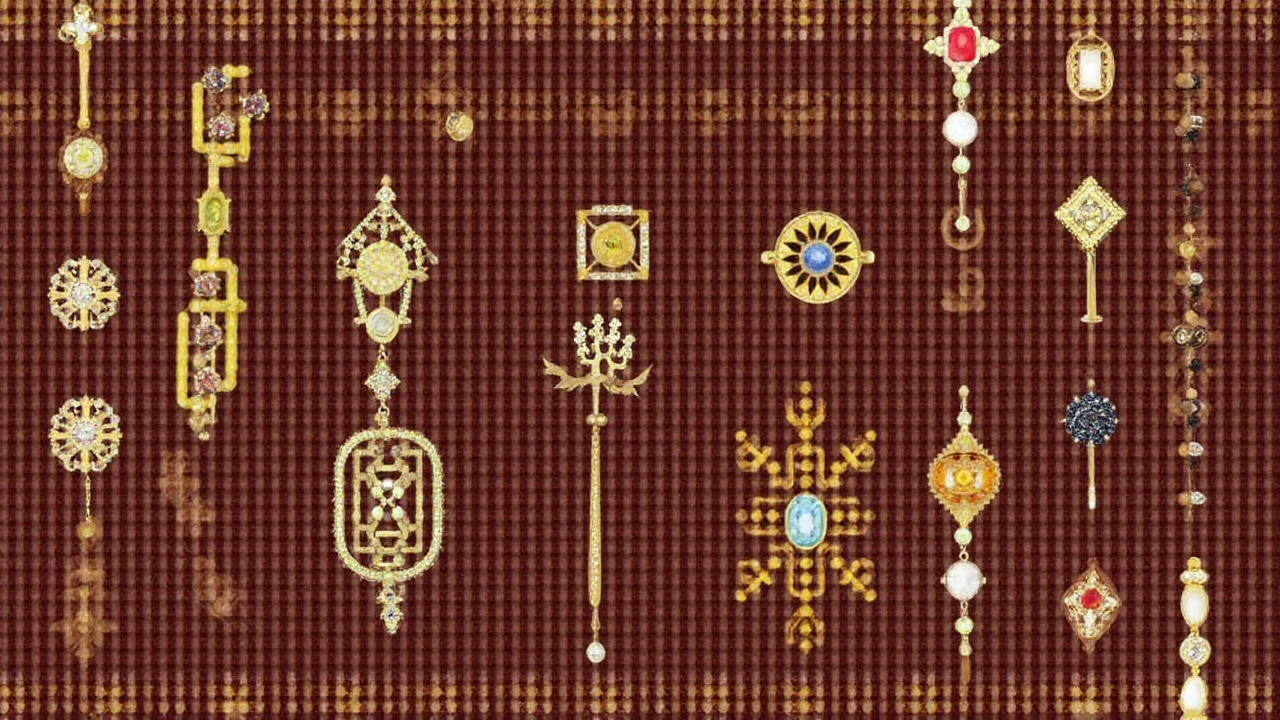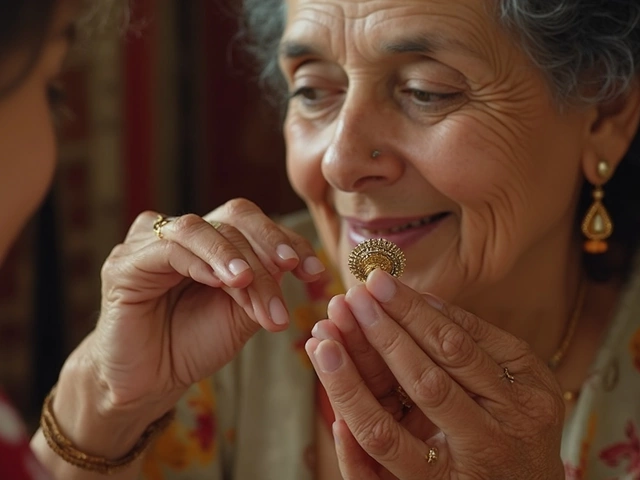
Nose piercings have fascinated many across different cultures and ages, becoming a sought-after form of self-expression. If you're contemplating this bold fashion move, you're probably wondering about one thing: the pain. On a scale of 1 to 10, where does it fall?
In this guide, we delve deep into the sensation of getting your nose pierced. We'll weigh the various factors that can make a difference in how it feels, provide pain management tips, and introduce you to a world of design ideas for nose pins. This isn't just about enduring a pinch—it's about embarking on a style journey that tells your story.
- Understanding the Pain Scale
- Factors Influencing Pain Levels
- Tips for Pain Management
- Popular Nose Pin Designs
Understanding the Pain Scale
When it comes to getting a nose piercing, one of the biggest questions is the amount of pain involved. What does a 1 or a 10 mean on the pain scale? Experience can vary greatly among individuals, making the understanding of this scale crucial. In simple terms, pain scales are subjective self-assessment tools, allowing individuals to express their pain levels by assigning a numerical value. Typically, a 1 signifies little to no pain—think of it as a gentle pinch or the discomfort you feel with a slight scratch. On the higher end, a 10 represents excruciating pain. Nose piercings, however, usually don't reach that threshold.
Pain perception is influenced by a myriad of factors, including personal pain tolerance, piercer skill, and even your current emotional state. One study in the Journal of Body Art found that people with higher anxiety levels often report more intense pain sensations, impacting their perception of a 1 to 10 rating. For most, a nose piercing is closer to a 3 or maybe a 4, assuming a skilled piercer with a steady hand.
When considering a nose piercing, it's essential to understand that the brief initial discomfort is just one part of the process. Some individuals may describe it feeling like a quick, sharp sensation followed by a throbbing or dull ache. While the procedure itself is swift, any soreness typically subsides within a few days, depending on aftercare and individual healing times. For those still apprehensive, choosing the right time and setting can lessen the anxiety. A reputable piercing studio where you feel comfortable can make all the difference, turning what could be a nerve-wracking experience into a memorable one.
"The pain is more of a pressure than a sharp jab," says renowned piercer Jonathan Shaw. "It passes quickly, and most clients are surprised at just how manageable it is."
To provide a numerical perspective, a survey conducted by a major piercing chain revealed insightful statistics. Of those who had their noses pierced, 60% rated the pain between 2 and 4, while only 20% rated it above a 5. For comparison, ear lobe piercings were often rated at 1 or 2, highlighting the nose as slightly more sensitive but far from unbearable. After all, as many say, beauty is pain, but nose piercings offer a manageable pain that's well worth the style and personal expression they bring.
Ultimately, understanding your position on the pain scale is a first step toward feeling prepared for your piercing appointment. Educating yourself about this metric can help demystify the process, strip away unnecessary fears, and allow you to embrace the piercing with confidence. Nose piercings have been a rite of passage, a symbol of rebellion, and a personal statement throughout history—and by gauging your own pain expectations, you're joining a diverse and colorful community that shares these time-honored traditions.

Factors Influencing Pain Levels
Deciding to accessorize your face with a nose piercing is an exciting venture, but it's natural to be concerned about the level of discomfort involved. How much a nose piercing hurts can depend on an array of factors, each contributing uniquely to your experience. One major element is individual pain tolerance. This is like a fingerprint—everyone's is different. Some people can breeze through piercing with just a pinch, while others find it more intense. Personal pain thresholds play a crucial role in shaping the experience and shouldn't be underestimated when preparing for the procedure.
Another key factor that can influence the pain level is the specific location of the piercing. Whether you're opting for a nostril, septum, or high nostril piercing, each spot has its own sensitivity. The nostril and septum are popular choices, with many reporting that septum piercings tend to hurt less than others. This is likely because the septum piercing goes through softer, less fleshy tissue compared to parts of the nostril. A common sentiment among those pierced is that the sensation is over quickly, sometimes described as a sharp pinch rather than a prolonged agony.
"It's not the pain that lingers but the adrenaline that leaves you exhilarated. A small moment of discomfort for a lifetime of style," says renowned piercing expert Brian Keith Thompson.
Also, consider the expertise of the piercer. An experienced piercer with a gentle hand can significantly reduce the momentary sting and assure proper placement, which indirectly affects perceived pain. They can provide a better experience, ensuring everything is sterile and precise. Research into the studio's reputation and piercer’s skill is priceless. Reading reviews or getting recommendations from friends could help select the right professional, which translates into a less painful and enjoyable piercing session.
Other Considerations
Moreover, the type of jewelry used can alter the pain level. For first-time piercings, using jewelry that is light and made from materials like titanium or surgical steel can aid in minimizing irritation. The weight and quality of the metal can impact healing and hence influence future discomfort. Aftercare isn’t just a minor detail; it plays a significant role in how your nose recovers. A proper cleaning routine with a saline solution can ease tenderness and speed up healing, making the painful part more of a fleeting memory rather than a persistent ailment.Emotions and mental state on the day of the procedure can also impact how you perceive pain. When you're calm and collected, the discomfort tends to be more manageable. Sometimes, managing anxiety can be as simple as practicing deep breathing techniques or listening to music that soothes. An interesting note is that women might find piercings slightly more painful if scheduled around menstruation due to heightened sensitivity. Reflecting on these variables helps to demystify the piercing process and gives you a clearer idea of what to expect. At day’s end, understanding these influencing factors helps you prepare, ensuring the next piercing is more about excitement than anxiety.

Tips for Pain Management
When the anticipation of getting a nose piercing is tinged with anxiety about the inevitable sting, knowing how to manage the discomfort effectively can be a game-changer. Many who have ventured into this realm of body art find that preparation and post-care play a significant role in both the piercing experience and the healing process. Within the heart of this preparation lies a collection of time-tested methods aimed at minimizing pain and ensuring a smooth recovery. It all begins with selecting a professional piercer with the right credentials, as this first step ensures that both the procedure and environment adhere to the strictest hygiene standards, thereby reducing complications and pain. The anticipation may raise heartbeats and flutter the stomach, but an experienced hand promises not only swiftness but also precision, cutting down on unnecessary agony.
Ahead of your piercing appointment, there are self-care measures that can fortify your body against the sting. It is crucial to be well-rested and hydrated, as fatigue and dehydration can heighten pain sensitivity. Ensure you’ve had a good meal, as a steady blood sugar level accompanying a nourished body reduces the likelihood of faintness or dizziness. During the piercing, employing deep and steady breathing techniques helps stabilize your nerves. Breathe consciously when the piercer counts down, since a focused breath can act as a powerful distraction from the sharp sensation.
Post-piercing, adhering to a stringent aftercare routine is paramount. Using a saline solution regularly cleanses the area and prevents infections, helping soothe any lingering soreness. Refraining from touching the fresh piercing with unwashed hands is critical, as it's a primary avenue for bacteria to enter. It's wise to steer clear of swimming pools and hot tubs during the healing period, as they may harbor irritants and pathogens. As the healing progresses, avoid unnecessary movements or pressure to the area, such as sleeping on that side, which can exacerbate discomfort. Nose pins come in diverse shapes and styles, but the initial jewelry should remain untouched until it's safe to change. A quote from Lesley Chen, a reputed fashion editor, once underscored,
"Pain is temporary, but a well-healed piercing is an everlasting signature of one's unique style."This emphasizes the virtue of patience in the world of piercings.
Furthermore, applying a cold compress intermittently can help alleviate swelling, and while the temptation may arise, it's best to avoid painkillers like aspirin which can thin the blood and potentially worsen bleeding. Opt instead for non-aspirin analgesics like ibuprofen. It is vital to remember that everyone's pain threshold varies, and communicating openly with your piercer about any concerns or past experiences with pain can aid in tailoring the procedure to your comfort level. In this journey of self-expression with nose piercings, managing pain effectively not only ushers in beauty untainted by the struggle but gifts the bearer a symbol of endurance and personal triumph.

Popular Nose Pin Designs
Expressing individual style through a nose piercing involves more than just choosing a placement—selecting the perfect design is equally important. Nose pin designs have evolved dramatically, blending traditional aesthetics with contemporary flair. The diversity in styles ensures there’s something for everyone, whether you lean towards minimalist elegance or bold statements.
One of the timeless classics is the stud. Often simple in nature, nose studs come in a variety of materials, including gold, silver, and even diamond-encrusted options. They can be as understated or as eye-catching as you desire. While traditional round-shaped studs remain ever-popular, innovations have introduced square, triangular, and other geometric shapes that cater to modern tastes. For those seeking a little sparkle without overpowering their other facial features, a small gem-studded piece can be the perfect choice.
For individuals wanting something a dash more noticeable, hoops offer a fresh take. These can be thin and unobtrusive or thick and visually striking, available in open-ended segments or complete loops. Hoops can accentuate the natural curves of your nose and face, making them a favored choice among teenagers and young adults. It's important to consider the material—hypoallergenic options like titanium are recommended for sensitive skin types.
Intricately designed nostril chains, connecting a nose pin to an earring, have made a comeback from ethnic fashion into mainstream adornment. They add an element of intrigue and are often seen in cultural festivals and weddings. Though often associated with traditional Indian bridal wear, these designs have successfully made their way into fusion fashion, appealing to a global audience seeking to mix history with style. Industry insiders have noted a rise in these designs due to their versatility. Meenakshi Singh, a well-known jewelry designer, states,
"The rise in demand for connected jewelry pieces shows how people love to intertwine fashion with cultural roots."
For the bold-hearted, septum rings provide a gateway to more unconventional looks. Known for their edgy appeal, septum piercings allow for diversely crafted rings—from simple bands to elaborate, artistic pieces adorned with intricate designs and embellishments. If initial reactions to societal judgment worry you, there are reversible piercings and clickers designed to be comfortably worn or removed at will.
Data shows there has been an increase in the market offering bespoke and customizable nose jewelry, creating unique pieces tailored to personal taste. Consider pieces that let you swap out gemstones or charms for diversity in everyday wear. The personalization ability not only elevates the aesthetic but also binds sentimentality to your fashion decision, making each piece a story wearable on your face.


